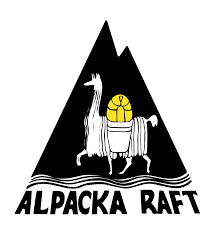Through the years many whitewater rafting guests have begged and pleaded their guides to allow them to go rafting without a wetsuit. Often times, when weather is sunny, and water conditions are warmer, wearing a wetsuit is unnecessary. Other times, and especially in the cold and rainy northwest, where we go rafting on rivers that are fed by glacial melt, it is downright irresponsible to not have cold water protection on your body while rafting.
In the article “The Chilling Truth about Cold Water Immersion” we learn that the cold is not only dangerous due to hypothermia, but the risks are pervasive, and span everything from a loss of dexterity to hallucinations. All of this can happen within just a couple of minutes of falling in cold water. Furthermore, as more research comes to light regarding the first stage of hypothermia, called “Cold Shock”, we are coming to find out that many people have more than likely lost their lives due to poor decision making, or a physical inability to rescue themselves due to the debilitating effects of falling in the water and being unable to catch their breath.
Safety is Triad River Tours’ #1 priority. Wetsuits are often necessary to provide a safe experience.
Think about it; you are out rafting with family and friends, you have a great guide and signed up with a competent and qualified outfitter (you probably even read their Yelp reviews). You are having the time of your life, and you are almost done with your river rafting trip when you fall out of the raft. The instant you hit the water your body goes from absorbing the suns rays on an 80-90 degree day, into water that (in Washington State) may be between 40 and 50 degrees farenheit. Your head bobs up almost immediately, but you’re now separated from your crew. You realize immediately that you are experiencing cold shock. You try to catch your breath, but your lungs are in a spasm, and you cannot get even a breath of air. Your body is now burning tremendous amounts of energy but with each passing second your situation is becoming more dire. In fact, there may be another section of whitewater rapids below you, and here you go into it, unable to breathe, with a body that is losing dexterity after a minute or so in the river.
We can only hope that your guide and your rafting paddle team are all on board and can come and rescue you, but that is not always the case; perhaps they themselves have fallen out, which means that a rescue may not happen for another minute or two, or longer. Now you can see the reason why wearing wetsuits is almost always advisable.
Often times river guides are wearing drysuits to protect them from the problems associated with cold water. In fact, in most swiftwater rescue courses held in Washington, drysuits are mandatory. The truth is that cold water is likely the most pervasive risk in river rafting in most conditions in the Pacific Northwest, making wetsuits one of the most crucial life saving pieces of equipment used in river rafting and other paddlesports.
Cold Water Immersion is one of the deadliest aspects of whitewater river rafting, and it is one of the most preventable risks that we encounter. By simply wearing a wetsuit (or drysuit) and preparing for cold water immersion, you give yourself much better chances of comfort and survival on your rafting trip.
Works Cited
The chilling truth about cold water immersion, by Dr Patrick Buck PhD REMT
https://www.kayaksession.com/the-chilling-truth-about-cold-water-immersion/
Read more:




















